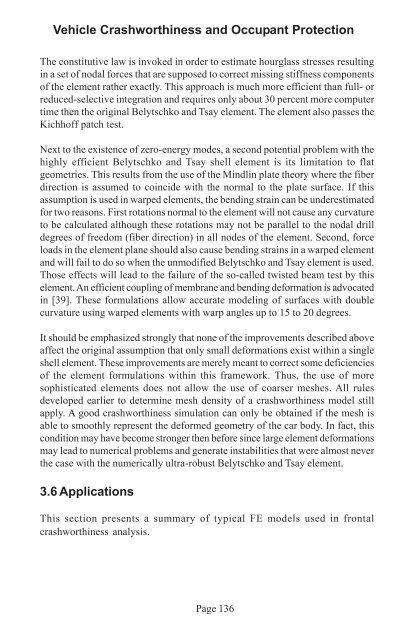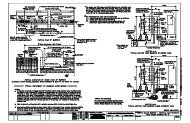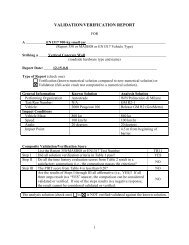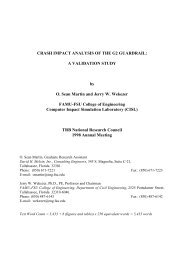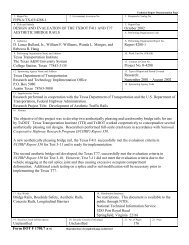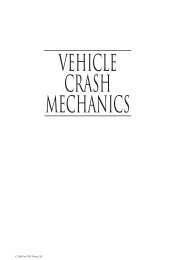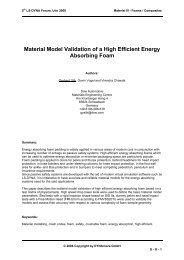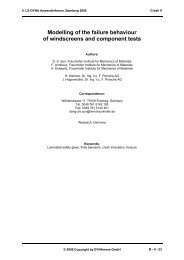Vehicle Crashworthiness and Occupant Protection - Chapter 3
Vehicle Crashworthiness and Occupant Protection - Chapter 3
Vehicle Crashworthiness and Occupant Protection - Chapter 3
You also want an ePaper? Increase the reach of your titles
YUMPU automatically turns print PDFs into web optimized ePapers that Google loves.
<strong>Vehicle</strong> <strong>Crashworthiness</strong> <strong>and</strong> <strong>Occupant</strong> <strong>Protection</strong><br />
The constitutive law is invoked in order to estimate hourglass stresses resulting<br />
in a set of nodal forces that are supposed to correct missing stiffness components<br />
of the element rather exactly. This approach is much more efficient than full- or<br />
reduced-selective integration <strong>and</strong> requires only about 30 percent more computer<br />
time then the original Belytschko <strong>and</strong> Tsay element. The element also passes the<br />
Kichhoff patch test.<br />
Next to the existence of zero-energy modes, a second potential problem with the<br />
highly efficient Belytschko <strong>and</strong> Tsay shell element is its limitation to flat<br />
geometries. This results from the use of the Mindlin plate theory where the fiber<br />
direction is assumed to coincide with the normal to the plate surface. If this<br />
assumption is used in warped elements, the bending strain can be underestimated<br />
for two reasons. First rotations normal to the element will not cause any curvature<br />
to be calculated although these rotations may not be parallel to the nodal drill<br />
degrees of freedom (fiber direction) in all nodes of the element. Second, force<br />
loads in the element plane should also cause bending strains in a warped element<br />
<strong>and</strong> will fail to do so when the unmodified Belytschko <strong>and</strong> Tsay element is used.<br />
Those effects will lead to the failure of the so-called twisted beam test by this<br />
element. An efficient coupling of membrane <strong>and</strong> bending deformation is advocated<br />
in [39]. These formulations allow accurate modeling of surfaces with double<br />
curvature using warped elements with warp angles up to 15 to 20 degrees.<br />
It should be emphasized strongly that none of the improvements described above<br />
affect the original assumption that only small deformations exist within a single<br />
shell element. These improvements are merely meant to correct some deficiencies<br />
of the element formulations within this framework. Thus, the use of more<br />
sophisticated elements does not allow the use of coarser meshes. All rules<br />
developed earlier to determine mesh density of a crashworthiness model still<br />
apply. A good crashworthiness simulation can only be obtained if the mesh is<br />
able to smoothly represent the deformed geometry of the car body. In fact, this<br />
condition may have become stronger then before since large element deformations<br />
may lead to numerical problems <strong>and</strong> generate instabilities that were almost never<br />
the case with the numerically ultra-robust Belytschko <strong>and</strong> Tsay element.<br />
3.6 Applications<br />
This section presents a summary of typical FE models used in frontal<br />
crashworthiness analysis.<br />
Page 136


